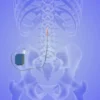Nearly 52 million Americans suffer from chronic pain, according to the CDC, with symptoms that can take a toll on their lives regularly, making it hard to work, socialize, and even sleep. While pain medication can help, it also has the potential for some serious side effects, partly because it only focuses on reducing symptoms instead of targeting the underlying cause.
With three locations in San Antonio, Texas, Advanced Spine and Pain Center is a leading provider of custom pain management therapies like radiofrequency ablation, focusing on stopping pain at its source. In this post, our team explains the basics of this cutting-edge therapy to help you decide if it’s a good choice for your painful symptoms.
How radiofrequency ablation works
Pain happens when your body releases chemicals that act on specific pain-sensing nerves. These nerves send signals to your brain along defined nerve pathways. In turn, your brain identifies not only the type of pain but also the location.
As a pain management therapy, radiofrequency ablation interrupts those nerve pathways, preventing the signals from reaching your brain. Specifically, radiofrequency ablation uses energy bursts to damage pain-sensing nerves in a very controlled way. Once the nerves are damaged, they no longer emit pain signals, reducing or eliminating symptoms.
Moreover, because the energy is so focused, it’s ideal for treating tiny nerve endings without damaging surrounding tissue. Treatments can also be repeated as needed to help keep pain under control. Better still, with radiofrequency ablation, you can enjoy pain relief without relying on long-term doses of pain medication.
Radiofrequency ablation can be an ideal solution for pain emanating from nerves in your back or neck. That includes chronic pain from problems like:
- Herniated discs
- Sciatica
- Degenerative disc disease
- Facet joint disease
- Osteoarthritis
- Spinal or cervical stenosis
In addition to managing pain near your spine, it can also be useful in managing painful side effects of back and neck problems, including chronic headaches, knee or hip pain, and shoulder pain.
What happens during and after treatment
Radiofrequency ablation is performed in our outpatient office using sedation and a local anesthetic to keep you comfortable and relaxed. We use a special type of X-ray to place the radiofrequency probe precisely.
Once the probe is in place, we trigger a burst of energy to create controlled damage in the nerve. After treatment, the probe is removed, and you spend a brief period in a recovery area before being discharged home.
Afterward, you’ll need to limit certain activities while the area heals, and you may have some discomfort at the treatment site for a week or two. Most people return to work within a day or two, possibly with limited duties.
Some patients notice an immediate reduction in their symptoms, with optimal effects occurring about ten days after treatment. Results can last up to two years, and repeated treatments can help prolong those results.
Find relief for your back or neck pain
Typically, our team recommends radiofrequency ablation once other options, like physical therapy, have proven ineffective. To learn more about radiofrequency ablation and how it can help you, call 210-690-0777 or book an appointment online with the Advanced Spine and Pain Center team today.





